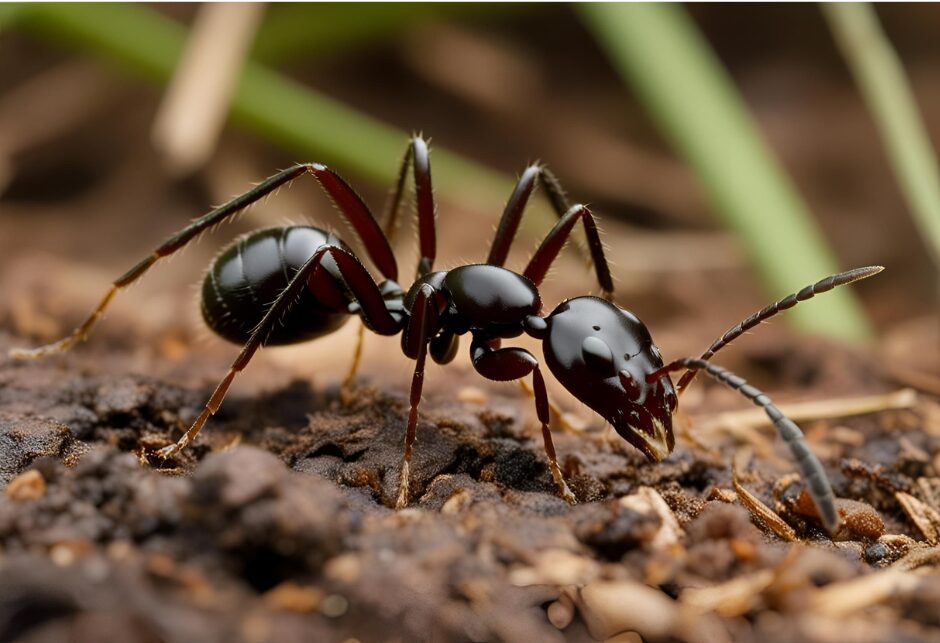
If you’re allergic to insect stings or simply enjoy spending time outdoors, there’s a new pest you need to know about: the Asian needle ant. This invasive species is rapidly spreading across the eastern United States, and while it may be small, the risk it poses—especially to allergy sufferers—is anything but.
Let’s dive into what makes these ants a growing concern, how to recognize them, and most importantly, how to protect yourself and your family.
What Are Asian Needle Ants, and Why Are They Spreading?
Originally from Asia, Asian needle ants (Brachyponera chinensis) were first identified in the U.S. as early as the 1930s. But in recent years, their numbers have surged, especially in temperate forests along the East Coast, from the Southeast up through the Northeast.
Unlike more aggressive ant species like fire ants, Asian needle ants are relatively calm—but don’t let that fool you. Their sting packs a punch and has been linked to serious allergic reactions, including life-threatening anaphylaxis in sensitive individuals.
The USDA Forest Service raised red flags in 2021 when populations began moving beyond wooded habitats and into residential areas, especially during the warmer months. Once summer hits, these ants may nest under rocks, leaf litter, rotting logs, and even doormats or flowerpots right outside your home.
How to Identify an Asian Needle Ant
Spotting these pests early is key to prevention. Here’s how you can recognize them:
- Color: Dark brown to black body with orange-brown legs and antenna tips
- Size: About 0.2 inches long—slightly larger than many native ant species
- Behavior: Non-aggressive, but will sting if provoked or disturbed
They might resemble other ants, but don’t get too close—better safe than sorry!
Why Asian Needle Ants Are a Serious Concern
Beyond their painful sting, these ants are problematic for several reasons:
- They’re invasive: Asian needle ants displace native ant species that contribute positively to ecosystems, like seed dispersal.
- They can trigger severe allergies: While not everyone reacts badly, those with existing insect sting allergies face a heightened risk.
- They’re sneaky: Because they aren’t aggressive, you may not notice them until it’s too late.
According to USDA reports, 2% of stings lead to anaphylaxis, a rapid-onset allergic reaction that requires immediate medical attention.
💡 Did you know? Symptoms like hives, wheezing, or low blood pressure after a sting could indicate anaphylaxis. Always seek emergency care if symptoms appear.
Simple but Effective Ways to Protect Yourself
Worried about an infestation or outdoor encounter? Here are practical steps to help keep your family and home safe:
1. Declutter Your Yard
- Remove leaf piles, old logs, and damp wood.
- Keep garden beds tidy and clear of excess debris.
2. Inspect High-Risk Areas
- Check under rocks, planters, doormats, and porches during summer.
- These ants love shade and moisture—don’t give them a place to hide.
3. Wear Protective Clothing
- When gardening or working outdoors, wear long sleeves, pants, and gloves.
- Their stingers can pierce thin fabrics.
4. Know the Signs of an Allergic Reaction
Familiarize yourself with the warning signs of anaphylaxis:
- Itchy hives, red or pale skin
- Shortness of breath, wheezing, or throat tightness
- Nausea, dizziness, or fainting
- Rapid, weak pulse
Those at risk should always carry an epinephrine auto-injector and act fast if stung.
Final Thoughts: Stay Vigilant, Stay Protected
The spread of Asian needle ants is a growing issue that combines environmental and public health risks. While these ants aren’t aggressively territorial, their sting can be serious, and their presence can disrupt local ecosystems.
But with awareness and a few preventative habits, you can dramatically reduce your chances of unwanted encounters.
👉 Keep your yard clean, learn to identify them, and always take precautions if you’re prone to allergies.
For more updates on invasive species and pest prevention tips, stay connected with our blog!
